Abandoned History: Chrysler and the Colt, Captive Economical Import Time (Part II)

Chrysler had its first involvement with Mitsubishi Motors Corporation in 1971. With a considerable stock purchase by Chrysler, the two companies’ long-lived captive import cooperation began. Introduced immediately to Americans in 1971 as the Dodge Colt, the nameplate was on its second generation by 1977. We pick up in the middle of that year, as third-gen Colts started to arrive from Japan. In the unusual arrangement, brand new (and differently sized) Colts were sold alongside second-gen Colts during the same model year.
Among the numerous visual and engineering changes to the second generation Colt in 1977 (covered previously), the new “Mileage Maker” version appeared later in the year. Sold alongside the second-generation two-door hardtop and wagon, the third-gen Mileage Maker models were available as a pillared two-door coupe, and four-door sedan.
Colt customers would notice the new model was smaller than its sibling on the showroom floor. The reason was a simple one: The third generation Colt was a light rework of the smaller Mitsubishi Lancer, not the Galant. The new models were still rear-drive and rode on a three-inch shorter wheelbase than the second-generation Colts. Exterior length shrunk from 171.1 inches to 162.6 – a noticeable difference in an already small vehicle.
Plymouth had their own version, also called Colt. Given the Mileage Maker (or M/M) marketing moniker, these Lancer Colts were offered only with the smaller 1.6-liter 4G32 inline-four. At the time the engine managed 83 horsepower and was still sold in standard and upgraded Silent Shaft versions. Customers who wanted the Silent Shaft treatment also received a five-speed manual (instead of four) in the relaxingly named Freeway Cruise trim package. Like the Carousel Coupe, the Freeway Cruise added special color theming, this time in maroon and white.
Chrysler was keen to differentiate the new Colts as more efficient and different than their predecessors and applied the Mileage Maker terminology to make that clearer to customers. This specific mixed Colt lineup was available for a very short time during 1977, as things changed once more in 1978.
That year, the Colt lineup moved fully into its third generation and was split differently than the year before. The two- and four-door models that were new for 1977 continued, while the small hardtop and old wagon were discontinued. The hardtop comes with an asterisk, more on that below. The unloved two-door sedan was also discontinued, but almost nobody noticed. The new member of the group was the third generation Colt wagon, which was of course not based on the Lancer like the other two. The new wagon was a Galant Sigma underneath and was considerably larger than its Lancer-based siblings.
With a luxurious 99-inch wheelbase, base wagons offered the 1.6-liter 4G32, in addition to a large 2.6-liter (105 HP) 4G54 inline-four. The 4G54 was part of the Astron family of engines (the first to introduce Silent Shaft) and was in production from 1978 through 1997. The 2.6 became familiar to pretty much anyone who purchased a Chrysler passenger car between 1982 and 1985.
There was another addition to the Colt lineup for 1978, but Chrysler changed its mind rather quickly. On the same platform as the Colt wagon but more upscale, the Dodge Colt Challenger made a brief appearance in Colt marketing materials. The hardtop was based on the Galant Lambda coupe, which debuted as a personal luxury car in Japan in 1977. The coupe had the same 99-inch wheelbase as the Colt wagon, with an overall length of 177 inches. Colt Challenger had a wide variety of engines depending on the market, which ranged from the 1.6-liter 4G32 through the 2.6-liter 4G54.
There were 2.0-liter turbo and 2.3-liter turbodiesel options for the Japanese market, but North American examples were limited to the 1.6 or 2.6 engines. The Colt Challenger was intended as the sporty personal luxury coupe, while a new name appeared over at Plymouth: Sapporo. Sapporo intended to appeal to the softer and more luxury-oriented traditional PLC customer. In 1978 Colt Challenger was available in one color scheme, two-tone silver, and charcoal.
The Challenger continued through the 1983 model year but was only marketed as a Colt offering for part of 1978. After a thorough search, I located one rare marketing photo reflecting the Colt Challenger’s original name. It would sadly become the last American-branded pillarless hardtop coupe ever. On the bright side for Colt, 1978 was the year it was integrated into the Dodge’s full lineup marketing, as the inefficient models of the early Seventies passed away.
Emissions strangulation was a part of life in 1978, and the 83-horse 1.6-liter dropped its figure to 77 that year. The power sap happened when Mitsubishi implemented its MCA-Jet emission control technology to the smaller Colt engine. MCA stood for Mitsubishi Clean Air, which the company tested out on its home market before shipping it internationally. MCA was in production since 1973 when it turned the 4G32 into the 4G32A.
Emissions controls were required earlier at home, as the Japanese government passed its own regulations in 1968. MCA used a PCV valve, and implemented secondary air injection to reduce tailpipe emissions. The process was assisted via a new catalytic converter and an EGR valve. The EGR didn’t appear until the second generation of MCA, called MCA-II. The -Jet portion of the name arrived when Mitsubishi added a smaller third valve to the engine cylinder, separate from the intake and exhaust valves.
Without getting too technical, the design caused air to swirl around in the cylinder, and burn the fuel more completely. The MCA-Jet system was simpler than the similar CVCC system developed at Honda. Engines equipped with MCA-Jet tended to get carbon buildup on the small jet valves, which would stick open and cause compression issues. The invention of four valves per cylinder made systems like MCA and CVCC obsolete.
By 1979, the third generation was already on its last legs. The pace of development was quick at Mitsubishi as the company’s sales exploded through the Seventies. There was already a fourth-generation car on dealer lots in 1979, and it was very different from the Colts that came before it, and indeed accompanied it at dealerships. Different body styles, different looks, and different driven wheels. We’ll enter the Eighties in Part III.
[Images: Chrysler]

Interested in lots of cars and their various historical contexts. Started writing articles for TTAC in late 2016, when my first posts were QOTDs. From there I started a few new series like Rare Rides, Buy/Drive/Burn, Abandoned History, and most recently Rare Rides Icons. Operating from a home base in Cincinnati, Ohio, a relative auto journalist dead zone. Many of my articles are prompted by something I'll see on social media that sparks my interest and causes me to research. Finding articles and information from the early days of the internet and beyond that covers the little details lost to time: trim packages, color and wheel choices, interior fabrics. Beyond those, I'm fascinated by automotive industry experiments, both failures and successes. Lately I've taken an interest in AI, and generating "what if" type images for car models long dead. Reincarnating a modern Toyota Paseo, Lincoln Mark IX, or Isuzu Trooper through a text prompt is fun. Fun to post them on Twitter too, and watch people overreact. To that end, the social media I use most is Twitter, @CoreyLewis86. I also contribute pieces for Forbes Wheels and Forbes Home.
More by Corey Lewis
Latest Car Reviews
Read moreLatest Product Reviews
Read moreRecent Comments
- Kwik_Shift_Pro4X Supporting EVs is supporting Chi-nah.
- Eliyahu Oh, a nicer looking 2025 Camry!
- Analoggrotto Sell Canada to Mexico.
- MaintenanceCosts Just here to say thanks for the gorgeous picture of Vancouver, which may be my favorite city in the world.
- TheMrFreeze I don't doubt that trying to manage a company like Stellantis that's made up of so many disparate automakers is a challenge, but Tavares asking for so much money is simply bad form. With the recent UAW strike and the industry still in turmoil, now is not the time. And as somebody with a driveway full of FCA products, I'd just like to say how much I miss Sergio and FCA. At least with him Chrysler and Dodge stood a chance of long term survival...



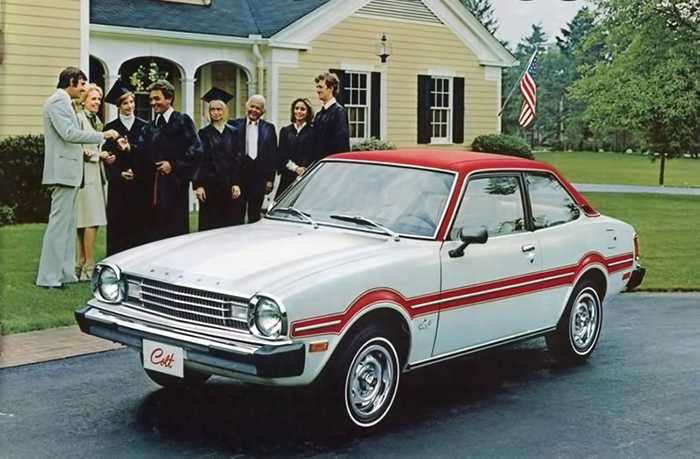




















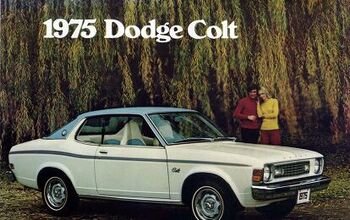

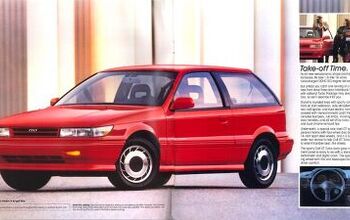
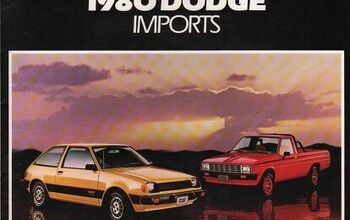
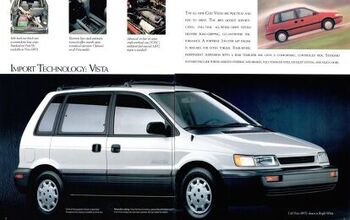










Comments
Join the conversation
This article brings back some good memories. I was in the Air Force and stationed on a base outside of Taipei. The base was great (with a dining hall beyond your dreams) but the travelling by AF bus to and from Taipei was a drag. And there was a special program available for GIs where we could buy an imported car and not pay any sales tax. The sales tax was 100%. If you were a citizen of Taiwan and wanted an imported car you paid a lot for that car. And here is the real kicker: a GI could own that car for one year and sell to a citizen for more than he paid for it. I had to have some of that action so I purchased Mitsubishi Colt, 4 door, white with a 4 on the tree, for $1500. I was asked to sell my car to a Chinese couple and I asked for $2300 which they were willing to pay but they dragged out the negotiations. I wondered why. Low and behold Chiang Kai Chek changed the tax laws and even used cars sold to citizens had to pay the 100% sales tax. I ended up selling to another GI for $1500 after driving it for a year. Every career GI who found out about this special tax treatment and who got orders for Taiwan would buy a black Buick LeSabre 225 with power everything for about $3600(?) knowing that at the end of their 2 year tour they could sell it for $5,000. When I got discharged I purchased a 1971 Corolla and I was the first in my area code to drive a Japanese car. I bought a new '76 Cold for my new bride. It wasn't as pain free as the Corolla. I think the Colt had one of the first counter rotating shafts to smooth out the engine.
I loved my Colt https://imgur.com/a/eAP32Iz